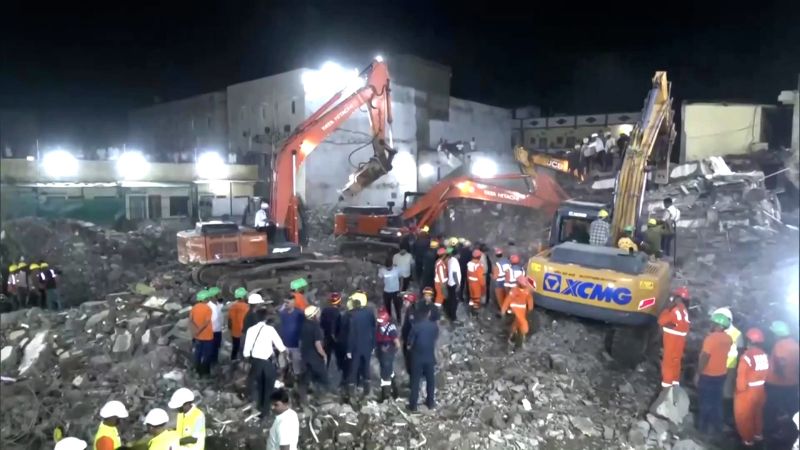Commencing from the heart of India’s state of Maharashtra, devastating news emerged that at least seven people have lost their lives, and multiple others are feared trapped following a catastrophic building collapse. The incident occurred in the early hours, leaving both authorities and local residents in despair and a frantic rush to rescue the victims.
The building, believed to be decades old, was located in a bustling city. News conference reports show that the collapse happened in the morning, causing those sleeping and unprepared to be caught in an unfortunate and terrifying predicament. The building’s structure, weakened by years of natural wear and neglect of maintenance, ultimately succumbed, resulting in this tragedy.
Upon arrival, seismologists and construction engineers rushed to the rubble-congested site. They quickly ascertained that the incident was not precipitated by any natural disaster such as an earthquake but was a collapse caused by structural failure due to aging and weakening of the building’s core. It was a stark reminder of the silent, inherent danger posed by standing structures that had long passed their prime.
Fire brigade personnel and rescue teams immediately swung into action, coordinating efforts to locate and extricate any survivors. Employing modern rescue equipment, thermal cameras, and search dogs, the teams meticulously sifted through the concrete and steel debris in hopes of locating survivors. As a result of their painstaking efforts, over 20 individuals were heroically rescued from the wreckage, but seven were tragically confirmed dead.
Amidst the chaos, local residents also rallied together in unity, providing provisional support and help in any possible way. They furnished rescue workers with food, water and even spare change of clothes, marking a silver lining in such devastating occurences – showcasing community spirit and shared humanity.
The government responded to the calamity by deploying additional emergency services and undertaking an immediate investigation into the cause of the structural collapse. Assessments of other old structures within the city were also ordered, to prevent further occurrences of this nature and ensure the safety of the citizens.
The incident has drawn attention to the wider problem that several Indian cities face – the existence of aging and dilapidated buildings. In a rush for urbanization and economic development, there is a pertinent issue of failing to maintain older buildings. The building collapse is an urgent reminder that improved regulatory measures, rigorous inspection regimes, and systematic maintenance schedules need to be integrated into the city’s urban planning strategy.
While grieving for those who lost their lives, it is integral to remember the importance of stringent building regulations, urban development planning, and emergency services’ readiness. Indeed, the tragic occurrence is a wakeup call for nations worldwide to bear in mind while prioritizing infrastructural development and public safety.




